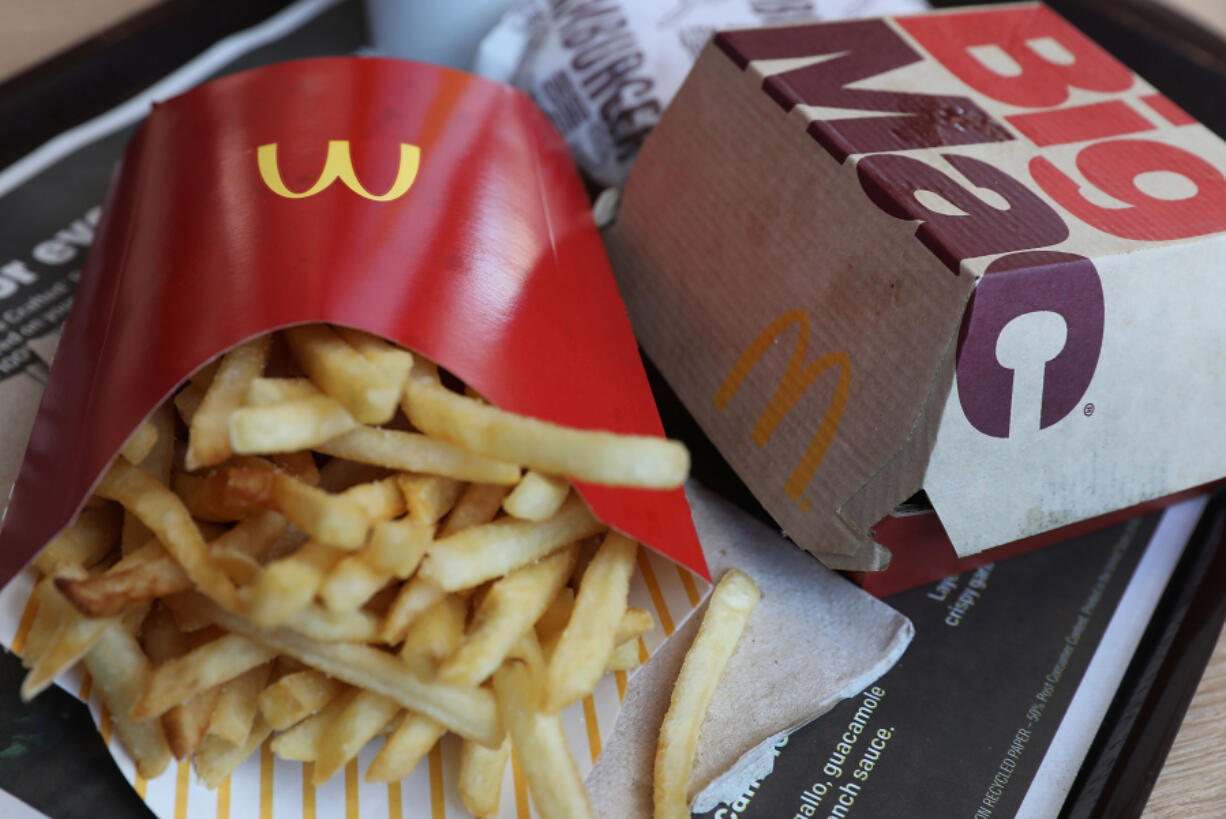The first meal I had as an American citizen was a Big Mac. This was in September 2013, and it cost less than $5 at a McDonald’s near the downtown Manhattan courthouse where the naturalization ceremony had taken place.
I had no expectation of enjoying it: I like my hamburgers greasy and flavorful and find Big Macs too dry and bland. But a McDonald’s was close at hand, and a burger was the most appropriate way to commemorate a uniquely American experience.
Since I was in New York, I could have chosen from any number of pricey patties-in-a-bun. My friend, gastronomic guru and Bloomberg Opinion colleague Howard Chua-Eoan had once taken me to lunch at DB Bistro Moderne in midtown, where Chef Daniel Boulud’s burger, made from a combination of short ribs, ground prime rib, foie gras and a hint of truffles, cost $29.
But to me, it is the cheap hamburger that is the archetypal American food, at once a national culinary quintessence and an instrument of international soft power — right up there with blue jeans and cola. It is also America’s favorite dish: We eat an estimated 50 billion burgers a year, the vast majority of which are made by affordable restaurant chains like McDonald’s and Burger King.
For the millions of Americans whose idea of dining out is a meal at one of those restaurants, it is their “third place.” That term was coined by sociologist Ray Oldenburg to describe the social environment where people are most likely to spend time, after home and work. This may come as a surprise to those who live in big cities, where there are other third places — parks, coffee shops, et al. — and where a McDonald’s is merely a collection point for a takeaway meal. But in smaller towns, and especially in poor and middle-income neighborhoods, a McDonald’s can also serve as a community center, where people build and foster physical social networks. It can be a public square where people break free from their social media bubbles and encounter a wider range of ideas.
So, we should pay attention when Americans get all hot and bothered about the rising cost of eating our favorite dish at their favorite place. An image from a Darien, Conn., McDonald’s rest stop last July went viral because it showed that a Big Mac combo meal was priced at $18. In November, an older video showing a $16 receipt for a smoky double quarter pounder BLT, a large fries and a large Sprite from a McDonald’s in Post Falls, Idaho, resurfaced on TikTok and went viral again.
(It is worth pointing out that the prices of burgers in chain stores can vary widely. According to the Council for Community and Economic Research, the retail price for a basic McDonald’s quarter pounder last summer ranged from $3.79 in Cedar Falls, Iowa, to $8.09 in Billings, Montana.)
Concerns about the price of hamburgers have risen in tandem with the broader worries about food inflation. And the anxiety hasn’t been assuaged by the argument that it indicates a fall in income inequality because better pay for fast-food workers has contributed to the price increase.
Burger chains are anxious, too. For now, sales and profits remain robust — but that’s because the price increases have compensated for a slowdown in customer traffic. To keep ‘em coming, burger joints have launched new marketing campaigns, some of them quite desperate.
McDonald’s is sending the Hamburglar on a promotional road trip, and the Big Mac is getting a big makeover. Burger King is hoping you’d be more inclined to visit one of its restaurants if the person at the till said, “You rule!” and handed you a cardboard crown. In a more restrained approach, Wendy’s, the third-largest burger chain, is counting on Cinnabon rolls to lure customers to breakfast.
But bells and whistles — and somewhat more juicy patties — won’t turn the tide. The American burger owes its iconic status, above all, to being inexpensive. McDonald’s Chief Executive Officer Chris Kempczinski acknowledged as much on an earnings call recently when he said customers who make less than $45,000 a year are feeling the price pressure. “From an industry standpoint, we actually saw that cohort decrease in the most recent quarter, particularly I think as eating at home has become more affordable,” he said.
Kempczinski said the company will focus on “affordability” and “absolute price point” rather than temporary deals in the months ahead.
A solution is not only important to the profit margins of restaurants. If fewer Americans are going to their third spaces, there will be consequences for society at large. For one, at a time of profound political division, exacerbated by the polarizing influences of an election year, we may need our third places more than ever — and a side of fries couldn’t hurt.



